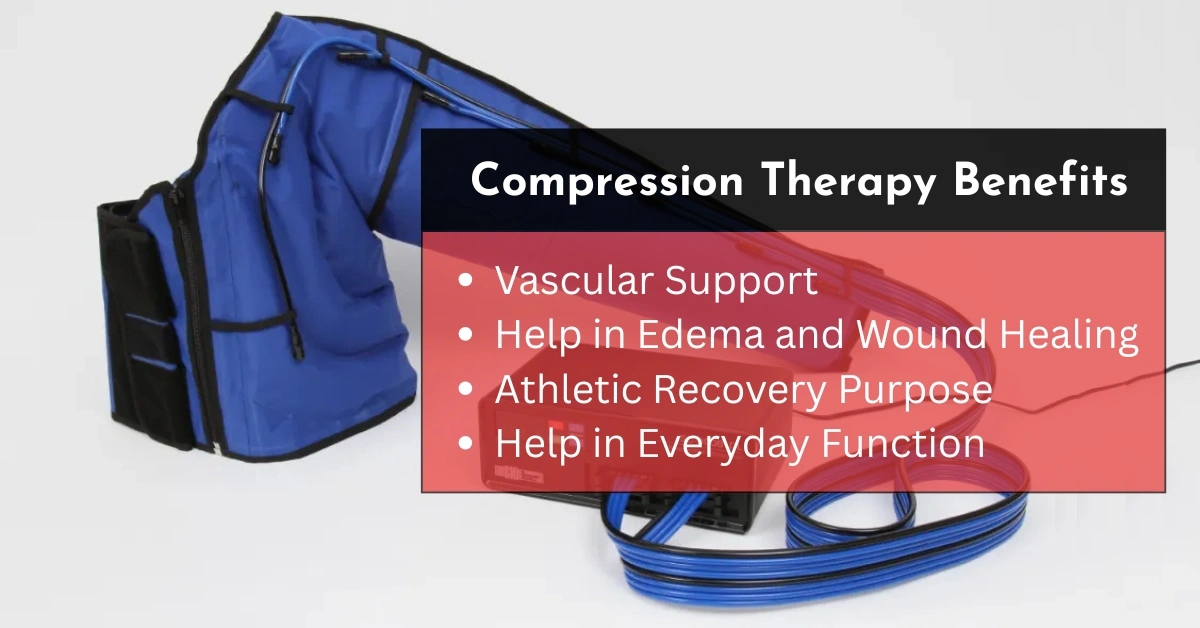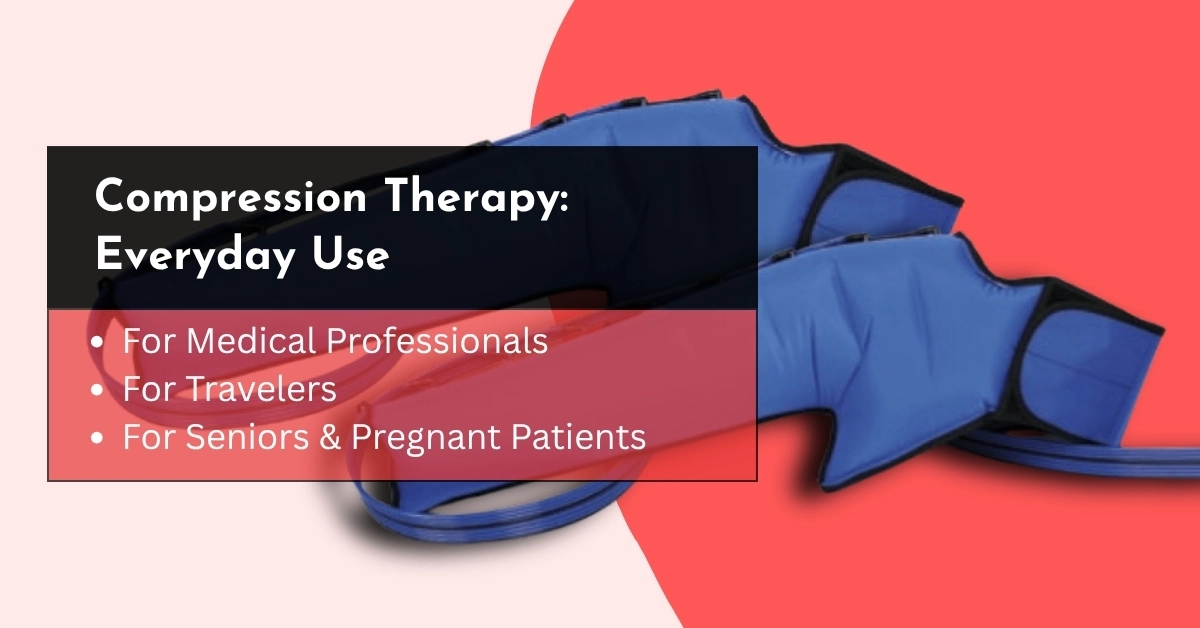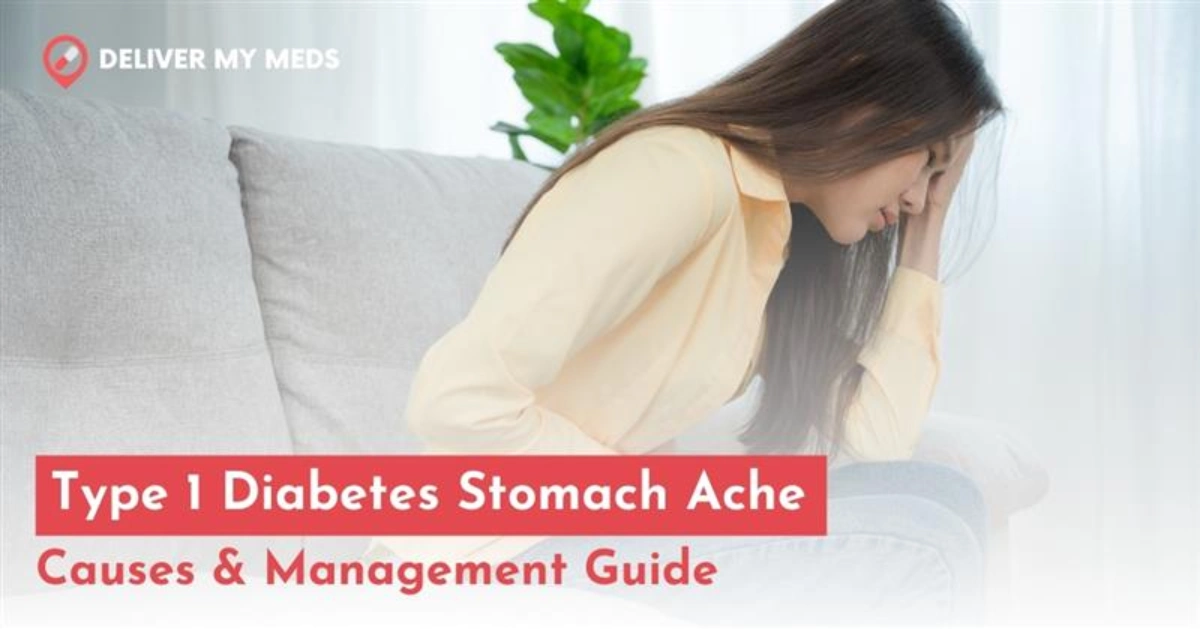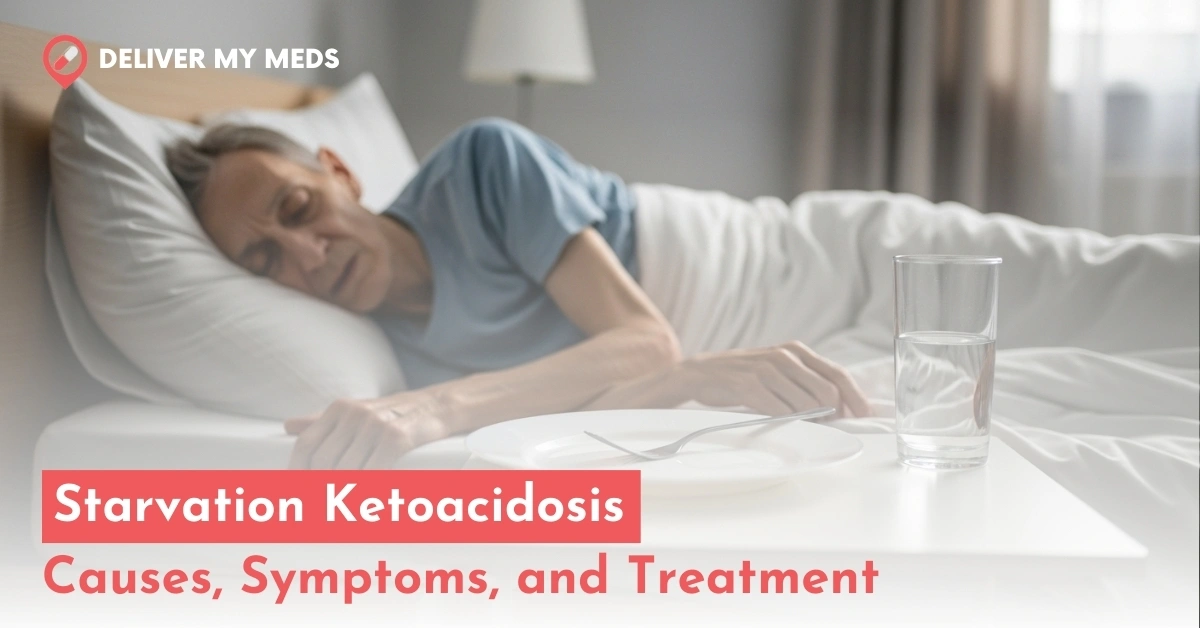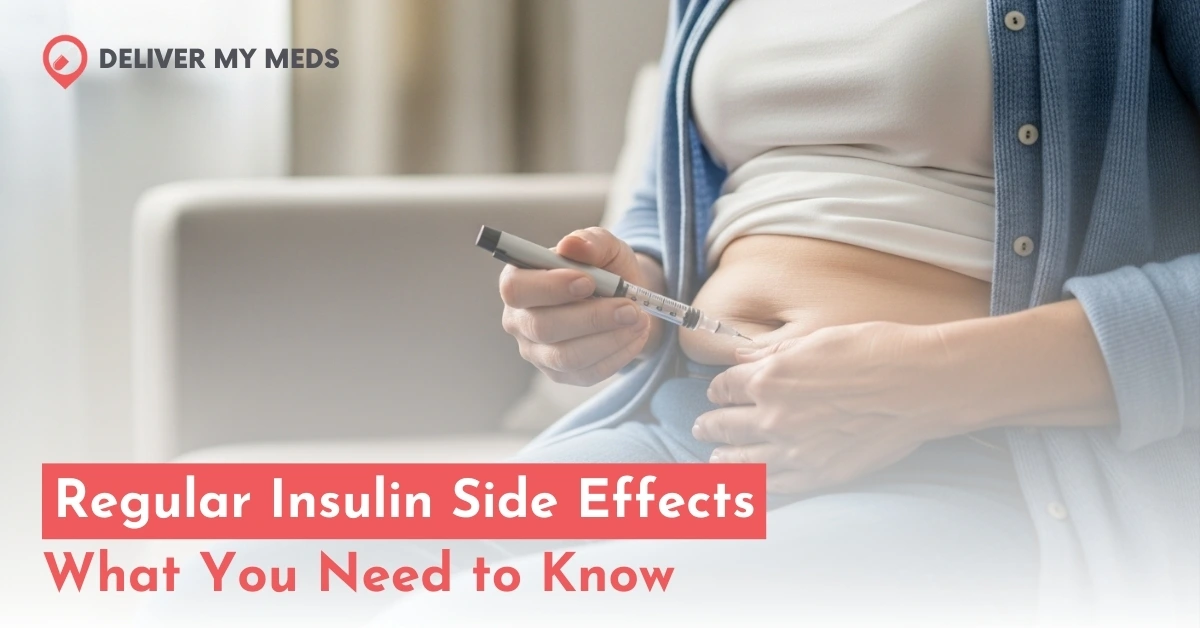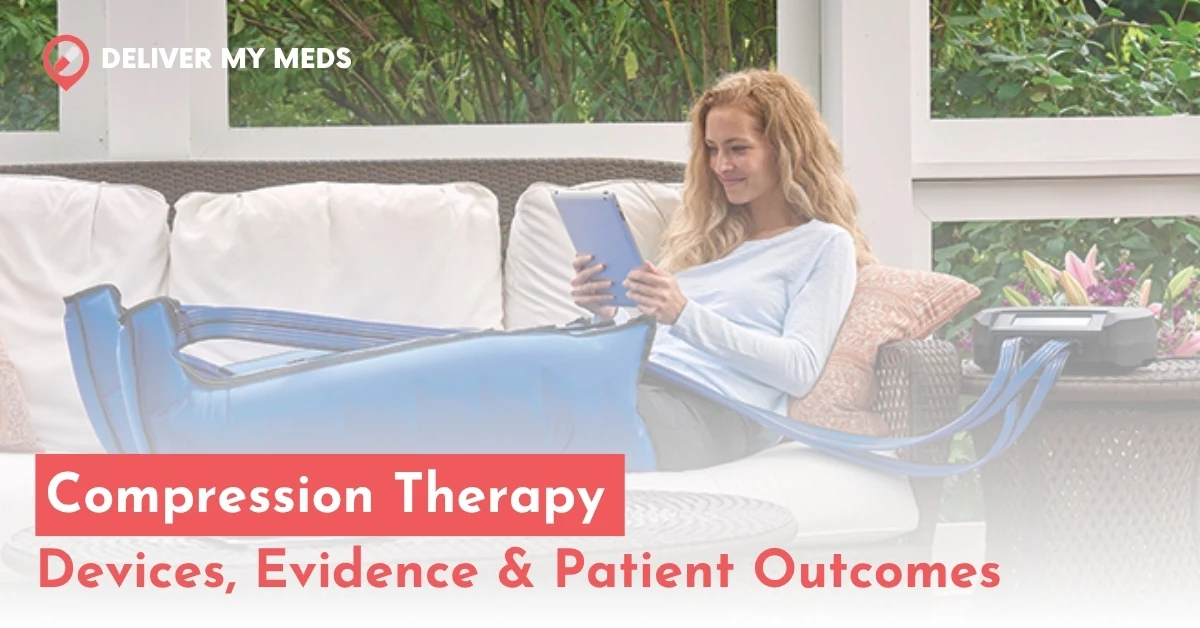
Compression Therapy: Devices, Evidence & Patient Outcomes
The best clinically approved method for Compression Therapy has always been focused on improving circulation and reducing swelling i patients who are affected by lymphedema disease. The latest methods with compression garments can mimic applying external pressure to further speed up recovery. These garments and devices are used to promote compression therapy to manage chronic edema, venous insufficiency, post-surgical fluid retention, and exercise-induced fatigue.
Multiple studies have proved, it enhances venous return and supports lymphatic drainage. From graduated compression garments for daily use to intermittent pneumatic compression (IPC) devices for post-operative care, this therapy is adaptable to various patient needs and clinical indications.
This guideline illustrates the indications for distal compression stocking pumps and pneumatic devices, as well as who benefits the most from them such as post-operative patients, individuals with certain vascular conditions, and even athletes. It demonstrates that compression therapy is an efficient method for enhancing blood flow and recovering.
What Is Compression Therapy?
Compression therapy is the application of external pressure on the limbs using medical-grade stockings or mechanical devices to improve blood and lymphatic circulation. This therapy promotes venous return, prevents fluid pooling, and supports vascular health.
Types of Compression Devices:
- Graduated compression stockings/sleeves: Designed to deliver the greatest pressure at the ankle, gradually decreasing toward the thigh, this gradient supports upward blood flow and prevents venous backflow.
- Intermittent pneumatic compression (IPC) devices: These motorized sleeves inflate and deflate in cycles, simulating muscular contractions to move blood and lymph efficiently.
Stockings are ideal for daily use, mild symptoms, and preventive care. In contrast, air compression leg massagers and pneumatic boots are suited for post-operative care, recovery, and chronic edema.
Many of our post-operation and diabetic users report noticeable relief from swelling within the first week of using compression sleeves delivered by DMM. “This therapy isn’t hypothetical; it’s backed by what thousands of our patients tell us daily.”
How Compression Therapy Affects Circulation
What does compression therapy do?
It improves blood flow by reducing vein diameter and increasing the velocity of venous return. For individuals with weak vein valves or impaired lymphatic function, therapeutic compression helps combat fatigue, swelling, and clot formation.
Does leg compression work?
Yes, graduated pressure in the range of 15-30 mmHg enhances the efficiency of the calf muscle pump, promoting improved venous return. For non-ambulatory patients, IPC boots provide passive circulation support, particularly valuable post-surgery or during bed rest.
According to patient feedback of DeliverMyMeds on our support line, compression therapy reduced heavy-leg sensations during prolonged standing by 60%. We’ve seen firsthand how IPC boots improve recovery in immobile patients within hospital-to-home transitions.
Pressure Settings: Compression Socks vs Machines
| Device Type | Pressure Range | Best For |
| Stockings/Sleeves | 15–30 mmHg (static) | Travel, daily wear, mild swelling |
| Pneumatic Devices | 20–100+ mmHg (adjustable) | Post-op care, chronic edema, athletic recovery |
Advanced devices like the Bio Compression SC-4004-DL and SC-4008-DL offer sequential 8-chamber, multi-zone compression with programmable pressure cycles. These systems are ideal for managing lymphedema, venous insufficiency, and surgical recovery.
Top Compression Therapy Benefits
Compression therapy benefits patients across various conditions. These include:
Vascular Support
- Maintains vein valve integrity
- Reduces risk of DVT and varicose veins
Edema and Wound Healing
- Controls fluid buildup
- Aids in healing chronic wounds and diabetic ulcers
Athletic Recovery
- Promotes muscle oxygenation
- Clears lactic acid to reduce soreness
Everyday Function
- Prevents fluid pooling in sedentary or standing occupations
- Enhances energy levels during extended activity
Compression therapy benefits include faster edema reduction, and at DMM, we offer FDA-approved devices like the SC-4008-DL pump with 8-chamber leg sleeves to support real patient recovery.
Compression Therapy After Surgery
Compression for legs after surgery helps control swelling, reduce clot risks, and accelerate soft tissue recovery.
Suggested Post-Surgical Protocol:
- Weeks 0–6: Apply 20-40 mmHg compression to manage swelling and support initial healing.
- Weeks 6–24: Increase to 30-50 mmHg to improve tissue perfusion and accelerate recovery.
- Long-term: 15-30 mmHg for maintenance
Patients with peripheral arterial disease (ABI 0.5-0.8) can also benefit from physician monitoring.
Performance & Post-Workout Use
Compression therapy for patients includes recovery applications in sports medicine, where enhanced circulation aids muscle repair and reduces delayed onset muscle soreness (DOMS). A 2017 meta-analysis in Frontiers in Physiology found that intermittent pneumatic compression significantly reduced muscle soreness and perceived fatigue after intense physical activity.
Devices like the BioCompression SC-4008-DL stimulate muscle contractions to promote venous return and reduce inflammation markers post-exercise. This accelerates lactate clearance, supporting faster recovery during high-performance training cycles.
Compression Therapy: Everyday Use
For Medical Professionals
- Alleviates leg fatigue from standing 12+ hours
- Reduces long-term vein complications
For Travelers
- Prevents fluid pooling on long flights
- Reduces risk of in-flight DVT
For Seniors and Pregnant Patients
- Improves walking comfort
- Reduces nighttime cramping and swelling
Safety Considerations & Contraindications
Is leg compression therapy good for you? In most cases, yes, but always consult a provider.
Possible Side Effects:
- Skin irritation or allergic reaction
- Nerve compression from a poor fit
Contraindications:
- Peripheral arterial disease (PAD)
- Untreated infections (cellulitis)
- Uncontrolled heart failure
Best Practices:
- Use accurate limb measurements
- Check daily for skin changes
- Replace stockings/devices every 6-12 months
Static vs Pneumatic Compression Devices: An Overview
Feature Stockings Pneumatic Devices
| Feature | Stockings | Pneumatic Devices |
| Pressure Range | 15-30 mmHg | 20-100+ mmHg adjustable |
| Wear Time | 8-12 hours daily | 30-60 minutes/session |
| Function | Constant gradient | Cyclical inflation/deflation |
| Use Case | Daily wear | Post-op, athletic rehab |
| Portability | Wear-and-go | Needs a power source |
| Maintenance | Washable garments | Replaceable sleeves |
| ROI | Affordable & effective | High-impact recovery tool |
Many of our users asked, “Are compression boots worth it?” Absolutely yes for those needing medical-grade post-surgical or performance recovery, the cost is justified by the outcome.
Scientific Backing
- DVT Prevention: IPC lowers post-op DVT/VTE risk by up to 60%
- Diabetic Foot Ulcers: Improved healing by 2.8x in 8 weeks using IPC
- Varicose Vein Relief: Long-term compression lowers recurrence and pain
Peer-reviewed journals and meta-analyses support these outcomes across diverse conditions.
Post-Operation Compression Plan (Quick Reference)
Timeline Recommendation
| Timeline | Recommendation |
| 0-6 weeks | 20-40 mmHg daily or IPC 2x/day |
| 6-24 weeks | 30-50 mmHg stockings or IPC |
| Maintenance | 15-30 mmHg for up to 8 months |
This progression helps patients avoid complications and maintain tissue health post-discharge.
Conclusion
Compressed therapy will help a lot of the population: post-operation, diabetic patients, travelers, sports people, and geriatric users. Compression devices such as stockings, pneumatic boots, and leg massagers have practical benefits in swelling control the prevention of complications, and increase in comfort.
Deliver My Meds, a trusted retailer, supplies FDA-approved compression sleeves, air compression tools, and leg compression therapeutic devices delivered at rapid and dependable speed across the U.S. Having the product supports and refills options, vascular health management has never been easier.

